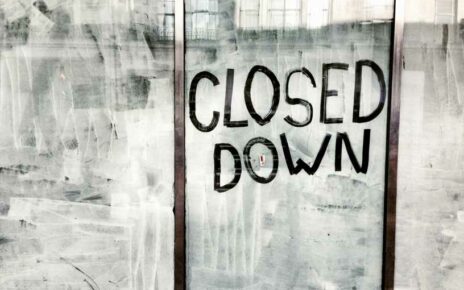Hard hitting social issue documentaries are getting more difficult to make and sell with each passing year. But despite the market’s fondness for true crime and celebrity-driven nonfiction content, the Sundance Institute’s Documentary Film Program (DFP) isn’t wavering when it comes to its support of docu filmmakers telling stories dealing with social impact topics including human rights, racial justice, gender equity, democracy, LGBTQ rights, environmental sustainability, freedom of expression, and civic empowerment.
This month marks the 20th anniversary of the DFP, which was established by the late Diane Weyermann in October 2002. In the last two decades the DFP has supported more than 1,000 projects from all over the world via the fund and/or its Edit, Story, and Producers labs. Docus that have received financial and instructional support from the DFP include Garrett Bradley’s “Time,” Roger Ross Williams’ “God Loves Uganda,” Kirsten Johnson’s “Cameraperson,” Bing Liu’s “Minding the Gap,” and Steve Bognar and Julia Reichert’s Oscar winning film “American Factory.”
Recently released docus vying for Academy Award consideration this year that the DFP backed include Laura Poitras’ “All the Beauty and the Bloodshed,” which won the Golden Lion at the Venice Film Festival in September as well as five docs that premiered at the 2022 Sundance Film Festival: Margaret Brown’s “Descendant,” Isabel Castro’s “Mija” (pictured above), Sara Dosa’s “Fire of Love,” Sierra Pettengill’s “Riotsville, U.S.A” and Alex Pritz’s “The Territory.”
This year 35 nonfiction projects will receive a total of $1,396,500 in unrestricted grant support via DFP’s Documentary Fund.
In 2005, Weyermann left Sundance to join Participant Media. Her successors were Cara Mertes, interim director Kristin Feeley, and Tabitha Jackson, who left the position to serve as festival director for the Sundance Film Festival from 2021-2022. In 2020, Carrie Lozano became the fifth woman tapped to helm the DFP. Lozano and Feeley, Sundance Institute’s Documentary Film Program deputy director, spoke to Variety about whose responsibility it is to vet documentaries, the DFP’s significance and the future of the program.
Does acceptance into a DFP Lab or receiving money from the fund help a filmmakers’ chances of getting into the festival?
Lozano: We don’t have any curatorial involvement in the festival. So, there are no guarantees that the artists we work with will get into the festival.
Feeley: I hesitate to give (numbers) because, in a way, it backs up this idea that there is a relationship between DFP support and one’s chances of getting into the festival, but if we have 40 to 50 that apply in a year, usually between 10 and 12 make it in.
Despite ongoing human rights atrocities being committed and threats to democracy worldwide, documentaries about social issues are becoming increasingly difficult to make and sell. Streaming services don’t seem overly interested in films about tough subject matters. Does that make the DFP more vital than ever before?
Lozano: We have a job to do of really helping the public understand the importance of independent media. We all know what happens when media has a very specific agenda and point of view and how dangerous that can be. We know what happens when misinformation runs rampant and how dangerous that can be. When it comes to the independent ecosystem, whether that’s journalism, documentary film, criticism in the form of column work, we all have a role to play in helping to ensure that important stories that are rigorous, engaging, and that give new insight, that those get out and that those meet audiences. If that starts to fall apart, we are in real trouble.
The DFP has supported many docs in recent years including “Ascension,” “The Mole Agent” and “Crip Camp” that have found distribution. But not all DFP projects are success stories with regard to the marketplace. What do you make of the current docu landscape?
Lozano: On the one hand, what’s been exciting is that audiences are excited about documentaries, and they are watching them as they would any other piece of media. So that’s important. What it means on the back end for the field, I think is really challenging. It’s not the golden age of documentary. Not every film finds a platform that’s appropriate for it or finds its audience in an easy way. So, we’re in a moment of instability and disruption and we have to be part of figuring out how we are going to make sure that the work finds audiences. That’s the big task ahead.
After “Jihad Rehab” premiered at Sundance in January, the doc received heavy criticism from human rights advocates and other documentarians, who were concerned that the film’s subjects were being framed as criminals. This led to talk about whose responsibility it is to vet docs. Someone I spoke to recently said, ‘Maybe the Sundance Institute could take that on.’ What’s your reaction?
Lozano: We are totally separate from the Sundance curatorial process, but I know what the reality is behind the scenes of what (vetting a film) would look like, whether that’s the festival or the institute or someone else. I have been on the broadcast side. I worked at Al Jazeera and with PBS “Frontline” and what it takes to vet a film, say an investigative film, is months and months and months – just for one film. So, how does one do that? I don’t have an answer for that.
In its 20-year history all DFP program directors have been women. Why do you think that is?
Feeley: There’s a legacy, especially in the last couple of decades, for very strong female leadership throughout the field, not just at Sundance. Also, all of the (DFP program directors) are women who had been active as producers and commissioners, and that informed their ability to lead this work, which really straddles the interests and needs of the artist with the commercial side and needs of the marketplace. So, I think it’s a prerequisite to have not only those abilities, but also have a vision on how to hold those things together in the same space.
Read More About:
Source: Read Full Article

